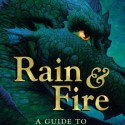Fans of the Impossible Life
Somewhat unremarkably, Fans of the Impossible Life starts with three characters drowning in their problems: Jeremy, Mira and Sebby. It’s a classic cataylst: three hopeless teens meet each other and find hope with one another. Jeremy is the victim of homophobic bullying; Mira has a history of depression and suicide attempts and Sebby is a queer fosterkid who tries to hdie his pain behind his quick wit. Sound like a motley crew? That’s because they are – meeting at an art class, they find they have more in common than not and find their best support network is themselves.
Fans of the Impossible Life isn’t quite so simple, though. Whilst it does start on that foot, Scelsa quickly switches and the novel enters altogether darker territory – prostitution, drugs, depression, bullying, and foster care. And whilst it’s true that the characters do (sort of) find hope in each other, it’s only half the story, and the novel ends in a half-tragedy (not the kind that is easily resolved in death). This is Scelsa at her best: when she’s penning YA that’s grittier than what fills the charts, when she can tap into the rawness of life.
Less successful is her choice of narrative: a bizarre 3 perspectives, each told in a different person: Jeremy in the first person, Mira in the second and Sebby in the third. It’s a confusing, jolting and frankly amateurish; Mira’s narrative is perhaps most coherent, being in the third, but the combination of the three completely spoils any sort of consistency Fans of the Impossible Life had to start with.
Some poor creative choices mean that Fans of the Impossible Life can only be a mediocre read. Whilst it touches on some engaging themes and characters (Sebby’s rawer, less contrived story is particularly good), the narrative problems of the novel drag the whole book down with them. It’s disappointing given the novel’s strong concept, but the execution has literally executed this novel. Unfortunate.






